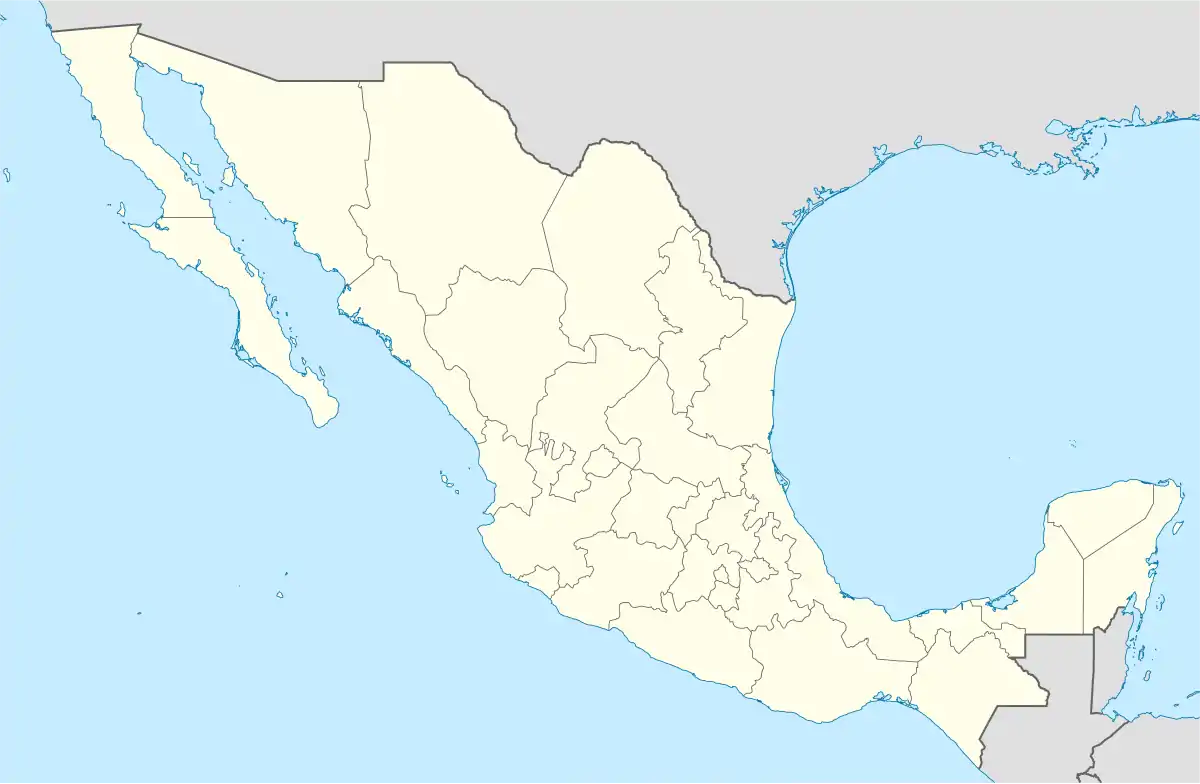Basúchil
Basúchil (Bajichi), water well in the Raramuri Language, [1] is a town in the municipality of Guerrero, State of Chihuahua, Mexico. It was founded in 1649 as a presidio to protect the jesuit mission in the Tarahumara Papigochi region a few miles to the west, now Cd. Guerrero.[2] Basúchil was initially named La Villa de Aguilar by his founder Diego Guajardo Fajardo governor of the New Vizcaya, New Spain. In 1652 the town was destroyed and its inhabitants assassinated by an attack incited by the lider Tarahumara Teporaca, years later it was resettled and renamed Basúchil.[3] The Adolfo Lopez Mateos-Madera Highway (Route 16) passes on the east side.
Basúchil
Villa De Aguilar | |
|---|---|
Town | |
 Basúchil Location in Mexico | |
| Coordinates: 28°31′N 107°24′W | |
| Country | |
| State | Chihuahua |
| Municipality | Guerrero |
| Elevation | 2,152 m (7,060 ft) |
| Population (2010) | |
| • Total | 1,451 |
| Time zone | UTC-7 (MST) |
| • Summer (DST) | -8 |
| Postcode | 31687 |
| Area code(s) | 635 |
| Climate | BSk |
Abraham González, later governor of Chihuahua, was born in Basúchil in 1864.[4] Ángel González, the ranchera composer best known for his seminal narcocorrido, "Contrabando y Traición," lived most of his life in Basúchil.[5]
Economy
In the twenty century Mennonites from the area of Cuauhtemoc, Chihuahua introduced apple trees, becoming one of the main industries of the region also, corn, beans, and potatoes are cultivated throughout the region.
Notes
- Domínguez, R. C. (2006). Basúchil. Chihuahua, México: Ediciones Del Azar A. C.
- Terrazas, Z. M. (2005). Memoria del Papigóchic: siglos XVII y XVIII. Chihuahua, Chih.: Kosmos.
- Whitt, E. B., & Brondo, M. A. (2008). Los Patriarcas del Papigochi. Chihuahua, Chih: La Prensa.
- de Martinez, Irene Brandtner y Nava (2008) "Chihuahua Governor Abraham González, a Descendant of New Mexicans" La Herencia 58: p. 34
- Wald, Elijah (2002) "Chapter 1: The Father of Camelia: Ángel GonzálezNarcocorrido: a journey into the music of drugs, guns, and guerrillas Rayo, New York, page 15, ISBN 0-06-050510-9
External links
- Photographs of Basúchil at Pueblos America
- Guarnición de soldados en la villa de Aguilar at Archivo General de Indias
- Pacificación de tarahumaras at Archivo General de Indias

